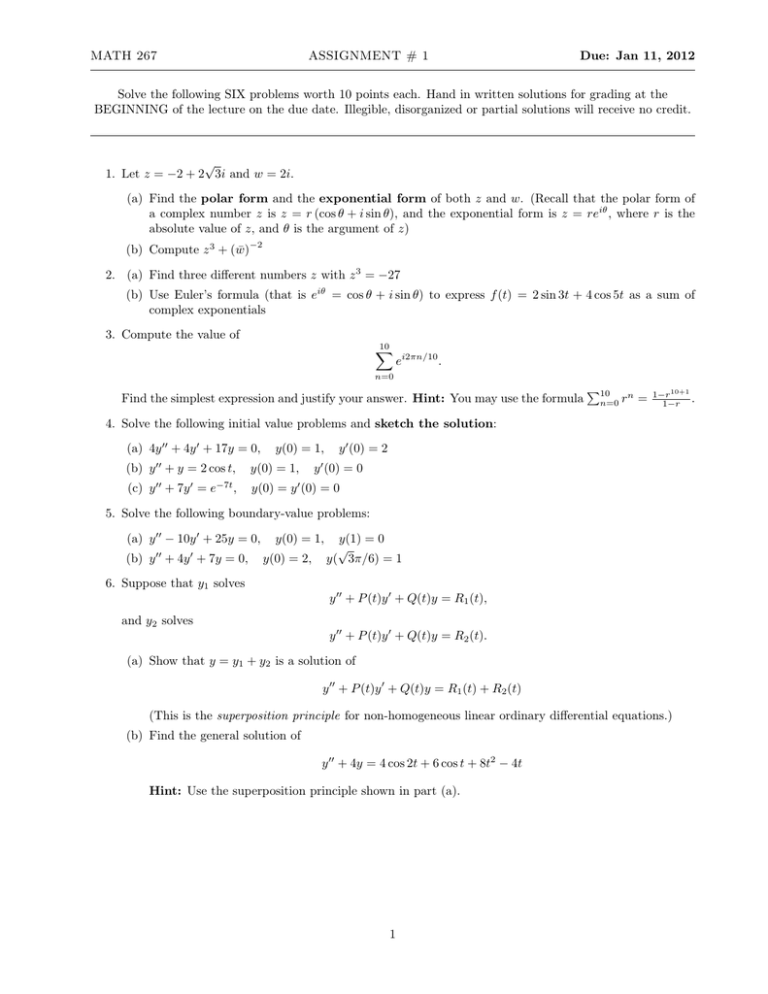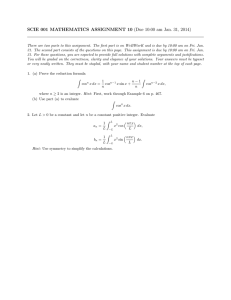Due: Jan 11, 2012 MATH 267 ASSIGNMENT # 1
advertisement

MATH 267 ASSIGNMENT # 1 Due: Jan 11, 2012 Solve the following SIX problems worth 10 points each. Hand in written solutions for grading at the BEGINNING of the lecture on the due date. Illegible, disorganized or partial solutions will receive no credit. √ 1. Let z = −2 + 2 3i and w = 2i. (a) Find the polar form and the exponential form of both z and w. (Recall that the polar form of a complex number z is z = r (cos θ + i sin θ), and the exponential form is z = reiθ , where r is the absolute value of z, and θ is the argument of z) −2 (b) Compute z 3 + (w̄) 2. (a) Find three different numbers z with z 3 = −27 (b) Use Euler’s formula (that is eiθ = cos θ + i sin θ) to express f (t) = 2 sin 3t + 4 cos 5t as a sum of complex exponentials 3. Compute the value of 10 X ei2πn/10 . n=0 Find the simplest expression and justify your answer. Hint: You may use the formula P10 n=0 rn = 1−r 10+1 1−r . 4. Solve the following initial value problems and sketch the solution: (a) 4y 00 + 4y 0 + 17y = 0, y(0) = 1, y 0 (0) = 2 (b) y 00 + y = 2 cos t, y(0) = 1, y 0 (0) = 0 (c) y 00 + 7y 0 = e−7t , y(0) = y 0 (0) = 0 5. Solve the following boundary-value problems: (a) y 00 − 10y 0 + 25y = 0, 00 0 (b) y + 4y + 7y = 0, y(0) = 1, y(0) = 2, 6. Suppose that y1 solves and y2 solves y(1) = 0 √ y( 3π/6) = 1 y 00 + P (t)y 0 + Q(t)y = R1 (t), y 00 + P (t)y 0 + Q(t)y = R2 (t). (a) Show that y = y1 + y2 is a solution of y 00 + P (t)y 0 + Q(t)y = R1 (t) + R2 (t) (This is the superposition principle for non-homogeneous linear ordinary differential equations.) (b) Find the general solution of y 00 + 4y = 4 cos 2t + 6 cos t + 8t2 − 4t Hint: Use the superposition principle shown in part (a). 1






